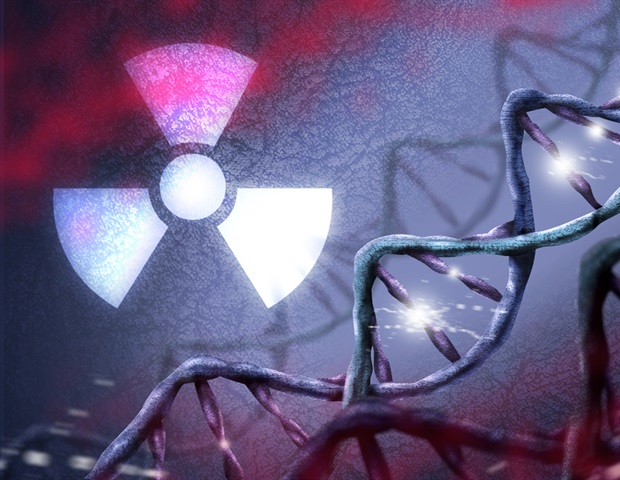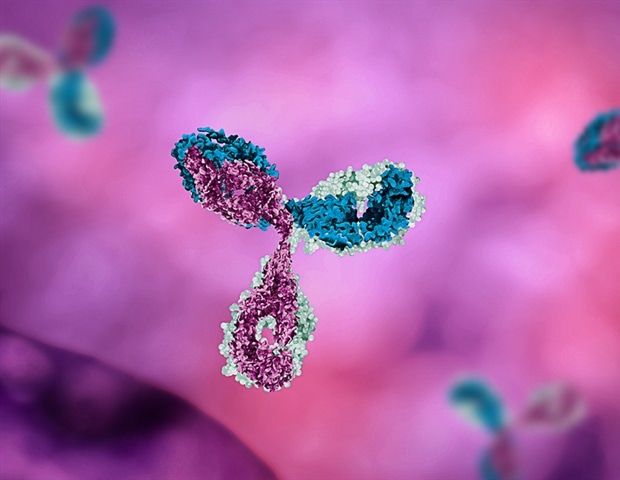When a gene produces too much protein, it can have devastating consequences on brain development and function. Patients with an overproduction of protein from the chromodomain helicase DNA binding (CHD2) gene can develop a rare and severe neurodevelopmental disorder that renders them wheelchair-bound, nonverbal and with profound intellectual delays.
Now, scientists at Northwestern Medicine and the Broad Institute of MIT and Harvard have discovered an RNA that acts like the brake in one's car to control how much or how little protein is produced by a gene. In patients with this rare disorder, a long non-coding RNA called CHASERR (CHD2 adjacent, suppressive regulatory RNA) is deleted -; the "foot" is taken off the "brake" -; and CHD2 protein production goes into overdrive, reports a new Northwestern Medicine study.
The study will be published Oct. 23 in the New England Journal of Medicine.
While most RNAs make proteins, long non-coding RNAs don't make proteins but are crucial for regulating gene activity. Long non-coding RNAs exist in the so-called "Wild West" (99%) of the human genome that is currently understudied.
Not only does this finding have treatment implications for patients with neurodevelopmental disorders such as epilepsy and autism, the study also underscores the need to explore understudied non-coding regions within the human genome.
"There are thousands of long non-coding RNAs, but, until this study, we didn't know what they did," said Gemma Carvill, the study's corresponding author.
One of the things we learned in this study is that the deletion of a specific long non-coding RNA changes the expression of a particular gene called CHD2. We call CHD2 a 'Goldilocks Gene,' because both too little is bad and too much is also bad. There's no reason at all to think that this is an isolated case, but more likely that these long non-coding RNAs and non-coding regions are implicated more broadly across human disorders."
Gemma Carvill, Assistant Professor, Neurology, Pharmacology and Pediatrics, Northwestern University Feinberg School of Medicine
Like taking the foot off the brake
The study specifically focused on the CHD2 gene, which causes autism and epilepsy. In 2013, Carvill and colleagues found that in a subset of patients with epilepsy and autism, the CHD2 gene produces too little protein.
This new study, however, examined three patients whose CHD2 gene produced too much protein. The common thread among all three patients was a deletion of the long non-coding RNA CHASERR.
Carvill said future studies that attempt to manipulate CHASERR might have success in controlling the amount of CHD2 protein that is produced, thereby leading to more effective treatments for patients.
Although previous studies in mice by Igor Ulitsky at the Weizmann Institute have found a link between a CHASERR deletion and how much CHD2 protein is produced, this is the first study to find this link in humans. Ulitsky, an expert in the biology of long non-coding RNAs, also is an author on the paper.
"With three patients, we were able to finally classify this as a new disorder," said co-senior author Anne O'Donnell-Luria, co-director of the Broad Center for Mendelian Genomics and an institute member at the Broad, clinical genetics physician at Boston Children's Hospital, and an assistant professor of pediatrics at Harvard Medical School. "The unique mechanism we've identified here suggests that there are more long non-coding RNAs underlying rare genetic disorders still to be found, which could potentially bring answers for some of the many families still waiting for a rare-disease diagnosis."
Emma's story
Emma Broadbent, 8, was the first of the three patients identified for this study. She is wheelchair-bound, non-verbal, uses a feeding tube and has severe intellectual delays. When her dad, Brian Broadbent, learned of Emma's deletion of CHASERR through her genome sequencing, he began scouring the internet for anyone researching CHD2. He eventually connected with Carvill and other scientists globally, and the resulting research team was able to identify the other two patients with the CHASERR deletion.
"Emma suffers a lot, and this adds purpose to her life because she's helping science," said Brian, who is a co-author on the study. "We felt we had a responsibility to push this as forward as much as we can because it's going to impact future children. This is just scratching the surface of something that could be really important. We intuitively understood that this was a lot bigger than just Emma."
Sequencing the 'Wild West' of the human genome
Today, when someone undergoes genetic testing to identify variants or changes that might be linked to genetic disorders or diseases, they first receive gene panels or exome sequencing -; which focuses on only 1% of the human genome that codes for proteins.
"It is mind-boggling that we only know what 1% of the human genome does, and we have very little idea what the other 99% does," Carvill said. "We ignore it, and our study highlights why we shouldn't."
If scientists don't find genetic disorders or diseases after exome testing, then they can perform genome testing. But so little is known about the function of the full genome that interpreting the findings can be challenging.
"Everything we currently we know about disease is rooted in a genetic variant in a gene, and that is because that genetic variant either destroys the function of the protein or it alters the function of the protein, but it's all protein based, and that's mostly because we've been doing exome sequencing," Carvill said. "But we know we're still missing things because there are still a significant percentage of kids in pediatric epilepsies and other disorders as well where we suspect they have a genetic basis, but we just haven't found it yet."
Implications for future treatments
Currently, patients with epilepsy are treated with antiseizure medications, but this is treating the symptom of the disorder and not the root cause. Additionally, 30% of patients with epilepsy do not respond to current medications. Ideally, Carvill and her team would like to treat patients with epilepsy and other seizure-related disorders with gene-targeting therapies to correct the root cause: the genetic change. Identification of non-coding regions that control gene expression, like CHASERR, is one way her team is thinking about using their knowledge of the human genome to design gene-targeting therapies.
Source:
Journal reference:
Ganesh, V. S., et al. (2024). Neurodevelopmental Disorder Caused by Deletion of CHASERR , a lncRNA Gene. New England Journal of Medicine. doi.org/10.1056/nejmoa2400718.

 2 hours ago
1
2 hours ago
1











%2c_analyze_by_microscope-Jarun_Ontakrai_8864dd9cfb3b4dff9a913aede7a7c915-620x480.jpg)




.png)

.png)
.png)
.png)













 English (US) ·
English (US) ·  Hindi (IN) ·
Hindi (IN) ·